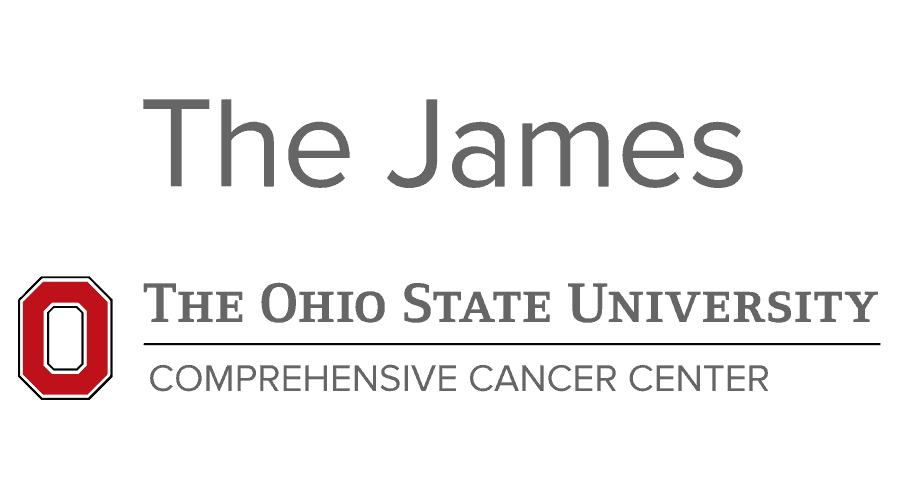Pharmacoanalytical Shared Resource
Please remember to cite the Shared Resources!
Research reported in this publication was supported by The Ohio State University Comprehensive Cancer Center and the National Institutes of Health under grant number P30 CA016058.
We thank the XX Shared Resource at The Ohio State University Comprehensive Cancer Center, Columbus, OH for (XX)
About Us (back to top)
The Pharmacoanalytic Shared Resource (PhASR) supports pre-clinical and clinical drug development at Ohio State by providing high quality and cost-effective bioanalytical method development, quantitative sample analysis, and pharmacokinetic/pharmacodynamic experimental design, data analysis and modeling.
441 Biomedical Research Tower
460 W. 12th Ave.
Columbus, OH 43210
Meet the Team (back to top)

Nicole Abbott, PhD, is a research specialist and chemist with background training in biochemistry and the application of LC-MS, ELISA and other analytical platforms for the study of biosynthetic pathways and anticancer drug activity. Dr. Abbott previously worked for the Nevada State Public Health Laboratory as a chemist and as manager of the Emergency Response Laboratory, and for the Centers for Disease Control as a research scientist/analytical chemist. In these roles, she led the development of novel assays, validation of these assays per FDA guidelines and application of the assays based on strict quality standards, including Good Laboratory Practices (GLP), Clinical Improvement Amendments (CLIA) and College of American Pathologists (CAP). Dr. Abbott will apply her analytical chemistry expertise toward assay development, validation and application of these assays to efficiently measure drugs, metabolites and biomolecules in research specimens.
Joo Young Na, PhD, is a postdoctoral scholar who supports pharmacokinetics and pharmacodynamics study design and data analysis using statistical modeling approaches. Dr. Na received her PhD in clinical pharmacology from Seoul National University, College of Medicine, in 2023. Dr. Na’s current research interest includes clinical and preclinical pharmacology, and her current projects are focused on pharmacometrics. The overall goal of her research is to bridge the knowledge gap between drug development and clinical application thereby supporting personalized pharmacotherapy via pharmacometrics.
Available Services (back to top)
- Analytical Method Development and Validation
- Sample Analysis for General Pharmaceutics/Pharmacology Experimentation
- Metabolite/Product Identification
- Experimental Design and Data Analysis
- Pharmacokinetic/Pharmacodynamic Data Analysis and Modeling
Click here for full list of services and fees
Analytical Method Development and Validation (back to top)
The PhASR staff offers expertise in developing and validating quantitative assays optimally suited for small molecules and peptides (LC-MS/MS), protein therapeutics (ELISA) and oligonucleotide therapeutics (ELISA and qRT-PCR). Proper analytical method development ensures appropriate understanding of factors that could influence results obtained with bioanalytical measurements or with measures of drug activity. For example, lack of understanding about compound solubility and stability may lead to incorrect conclusions from in vitro or in vivo pharmacokinetic or pharmacodynamic studies. Full validation of a newly developed method, based on the Guidance for Industry, Bioanalytical Method Validation published by the U.S. Food and Drug Administration, is completed for all work involving clinical trials, and it is recommended for all methods producing results intended for publication in non-clinical studies.
Accurate and sensitive quantification of drugs, metabolites and endogenous biomolecules requires developing and validating analytical methods optimized for precision and accuracy. For LC-MS methods, this involves appropriate selection of internal standards, solvents or solid-phase media for efficient sample extraction, LC mobile phases, analytical columns, liquid flow rates, gradients, ion polarity, daughter ions, gas flow rates and other general MS parameters. For some compounds, LC-MS may not be the most appropriate method of quantitation and an alternative detection method should be considered.
The outcome of the Analytical Method Development and Validation service is a validated method for accurate and precise quantitation of a specific compound within a given matrix (e.g., blood, plasma, tissue, urine, etc.).
Sample Analysis for General Pharmaceutics/Pharmacology Experimentation (back to top)
Once an analytical method is developed, compound quantitation can be achieved. Using validated method procedures, the PhASR processes and analyzes samples containing unknown concentrations of the compounds of interest. Samples may arise from biological matrices, such as plasma, urine or feces, or they may come from in vitro systems. The validity of results is ensured by the method validation process, processing quality control samples and standard samples – all processed and analyzed in parallel to the unknown samples.
Once a run is complete, the PhASR reviews the data to validate the analytical run and ensure that quality control sample measurements fall within the allowed accuracy range and that the measured standard sample concentrations produce a linear range for quantitation.
Metabolite/Product Identification (back to top)
The PhASR provides expertise in metabolite and product identification. Knowledge of the metabolic pathways of a drug or drug class is critical in the drug development process, and mass spectrometry provides a means to specifically identify metabolites formed in small quantities in in vitro or in vivo systems.
Both LC and MS conditions are developed to separate the parent compound and metabolites adequately. For cases in which the metabolic pathways are known, specific metabolites may be anticipated, and the mass spectrometer can be tuned to look for these specific compounds. For cases in which the metabolic pathways are not known, searches for all possible metabolites can be conducted.
Experimental Design and Data Analysis (back to top)
Experimental Design and Data Analysis offers users full access to the PhASR’s expertise in characterizing relationships between drug pharmacokinetics and pharmacodynamics, including specialized needs for sample collection, specimen preparation and storage, data analysis and statistical modeling. The service provides clinical and pre-clinical research expertise in understanding the expected kinetics and fate of a drug and/or its metabolites in a biological system. Through proper design of a pharmacokinetic sampling strategy, representative biological specimens are obtained before, during and after drug administration. Samples are processed and stored appropriately to ensure they remain representative of the biological samples originally obtained.
For clinical studies, the PhASR works closely with the Clinical Treatment Unit to advise on sampling and storage strategies that will provide the highest quality data while considering patient needs and clinical procedures.
After samples are analyzed, the PhASR completes appropriate analysis to ensure the quality of the raw data. The outcome of this service is a carefully designed PK/PD study, which yields data and results that achieve the investigator’s project objectives
Pharmacokinetic/Pharmacodynamic Data Analysis and Modeling (back to top)
After samples have been analyzed, the PhASR can complete analyses of the data generated. Relevant PK/PD parameters and statistical considerations are defined during the experimental design process, and the data analysis follows the outlined plan.
The PhASR staff are highly trained and experienced in PK/PD data analysis and modeling, which ranges from basic statistical comparisons to linear and non-linear, mixed-effects data modeling. The quantity and level of data analysis will differ for each project. Analyses could range from a simple comparison of drug concentrations between experimental and control samples sets to a more complex analysis requiring a population PK/PD model to be constructed, qualified and validated for predictive capabilities.
Please remember to cite the Shared Resources!
Research reported in this publication was supported by The Ohio State University Comprehensive Cancer Center and the National Institutes of Health under grant number P30 CA016058.
We thank the XX Shared Resource at The Ohio State University Comprehensive Cancer Center, Columbus, OH for (XX)
